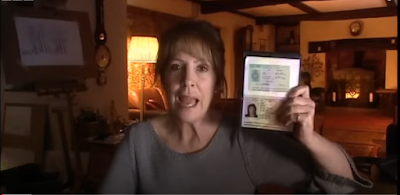Doctor Who: Audience and Industries
1) Who is the target audience for Doctor Who? Do you think it has changed since 1963?
Doctor Who began in 1963 as a show for kids and families. Over time, it changed to include older viewers too. Since 2005, it has tried to make stories for both old fans and new ones. Today, it is made for people of all ages around the world.
2) What audience pleasures are offered by Doctor Who - An Unearthly Child? Apply Blumler and Katz's Uses and Gratifications theory to the episode. Make sure you provide specific examples from the episode to support your ideas.
Personal Identity:
Viewers might see themselves in Susan, a smart and curious teenager who feels different. People might also relate to Ian and Barbara, normal teachers trying to understand something strange.
Personal Relationships:
The characters care about each other. Ian and Barbara try to help Susan, and viewers might enjoy watching their friendship grow. People might also talk about the show with friends or family.
Diversion (Escapism):When they enter TARDIS and are taken to another planet
Surveillance (Information / Facts):
3) What additional Uses and Gratifications would this episode provide to a modern 2020s audience?
Despite it being less educational for a 1960s audience, this episode is highly educational for a modern audience on what TV and general life and society was like in the 1960s. For example, racism was more prevalent and less called out / recognised, and the audience could see more about what the fashion was like, what school life was like, the diversity in Britain at the time, etc. The audience could also learn about the low-quality of TV in the 1960s, as the show is in black and white and has quite clunky, slow camera movement and poor-quality acting (Ian falling during the TARDIS's space-travel sequence).
4) Thinking of the 3 Vs audience pleasures (Visceral, Vicarious and Voyeuristic pleasures), which of these can be applied to An Unearthly Child?Visceral : Space / time travel sequence. Argument between the Doctor and Ian Ian and Barbara exploring the Junkyard
Vicarious: Space / time travel sequence. Empathising with Ian and Barbara's concern for Susan. Empathising with Susan's experience in school
Voyeuristic: Space / time travel sequence. Argument between the Doctor and Ian. Seeing private conversations between Ian and Barbara. Seeing the inside of the TARDIS. Seeing the inside of the Junkyard
5)What kind of online fan culture does Doctor Who have? Give examples.
Doctor Who has a lively online fan community where people share fan fiction, art, and memes. Fans talk about episodes, create theories, and discuss the show on forums and YouTube. Many also dress up as their favourite characters at conventions and support charity causes linked to the show. Overall, it’s a creative and passionate group of people who love the Doctor and his adventures.
Industries:
1) What was the television industry like in 1963? How many channels were there?
In 1963, there were only a few TV channels. In the UK, there were two: BBC One and ITV. In the US, there were three main ones. TV shows were in black-and-white, and there were only a few hours of TV each day. People didn’t have cable, and TVs were big with antennas for better signal. Doctor Who was about to start on TV!
2) How does An Unearthly Child reflect the level of technology in the TV industry in 1963?An Unearthly Child reflects the technology of 1963 with its black-and-white visuals and basic special effects. The show had simple sets and relied on practical props, as there was no colour TV or advanced editing at the time. The production was straightforward, with a focus on storytelling rather than high-tech effects.
3) Why is Doctor Who such an important franchise for the BBC?
Doctor Who is important to the BBC because it's a long-running, popular show that brings in a big audience. It makes money through merchandise and international sales and is a key part of British culture. The show helps the BBC stay creative and attract new viewers.
The Doctor Who franchise includes spin-offs like Torchwood, about an alien-fighting team, and The Sarah Jane Adventures, featuring the Doctor’s old companion. There’s also Class, set in a school with aliens, and some animated shows. These add more stories to the Doctor Who world.

Comments
Post a Comment